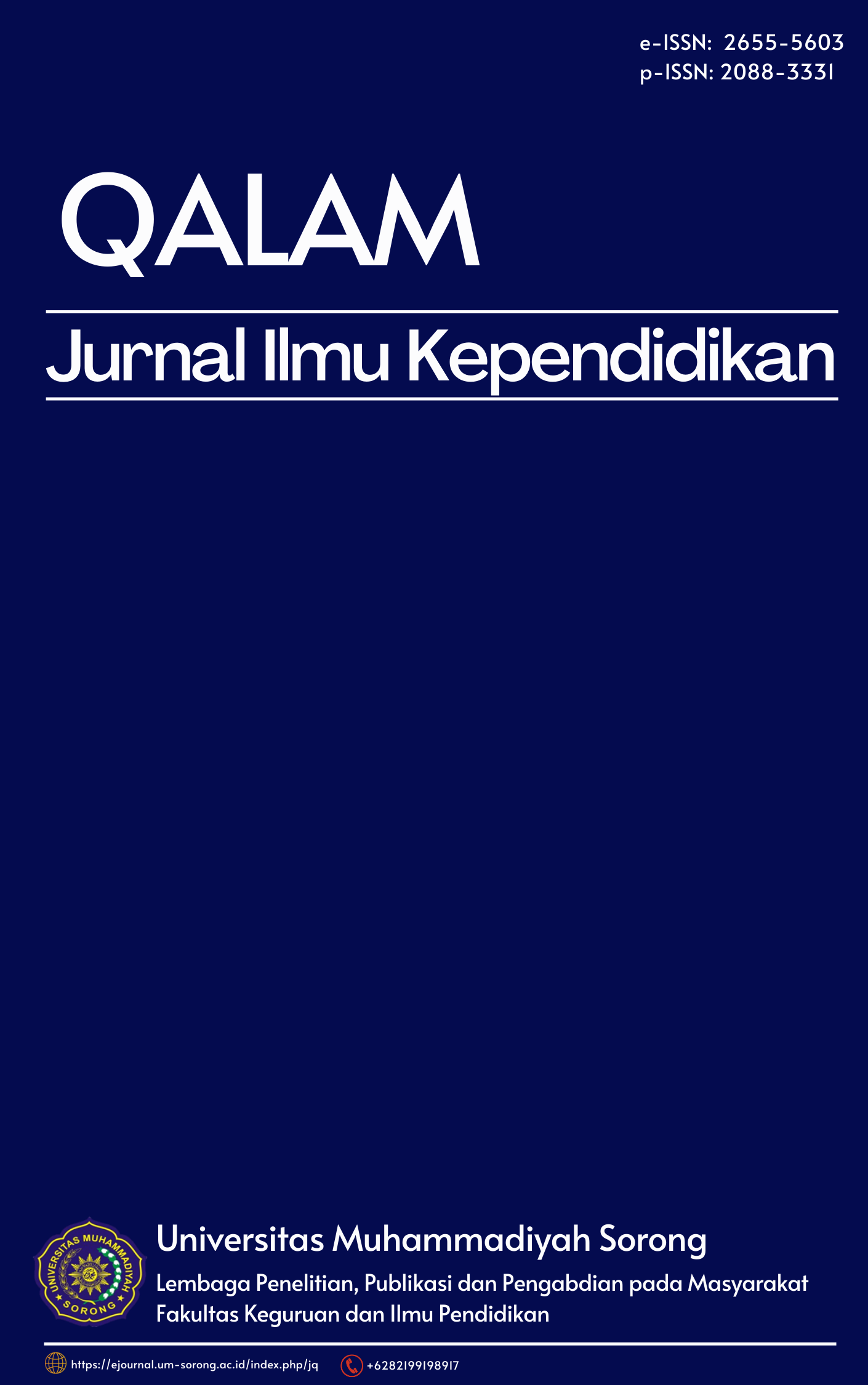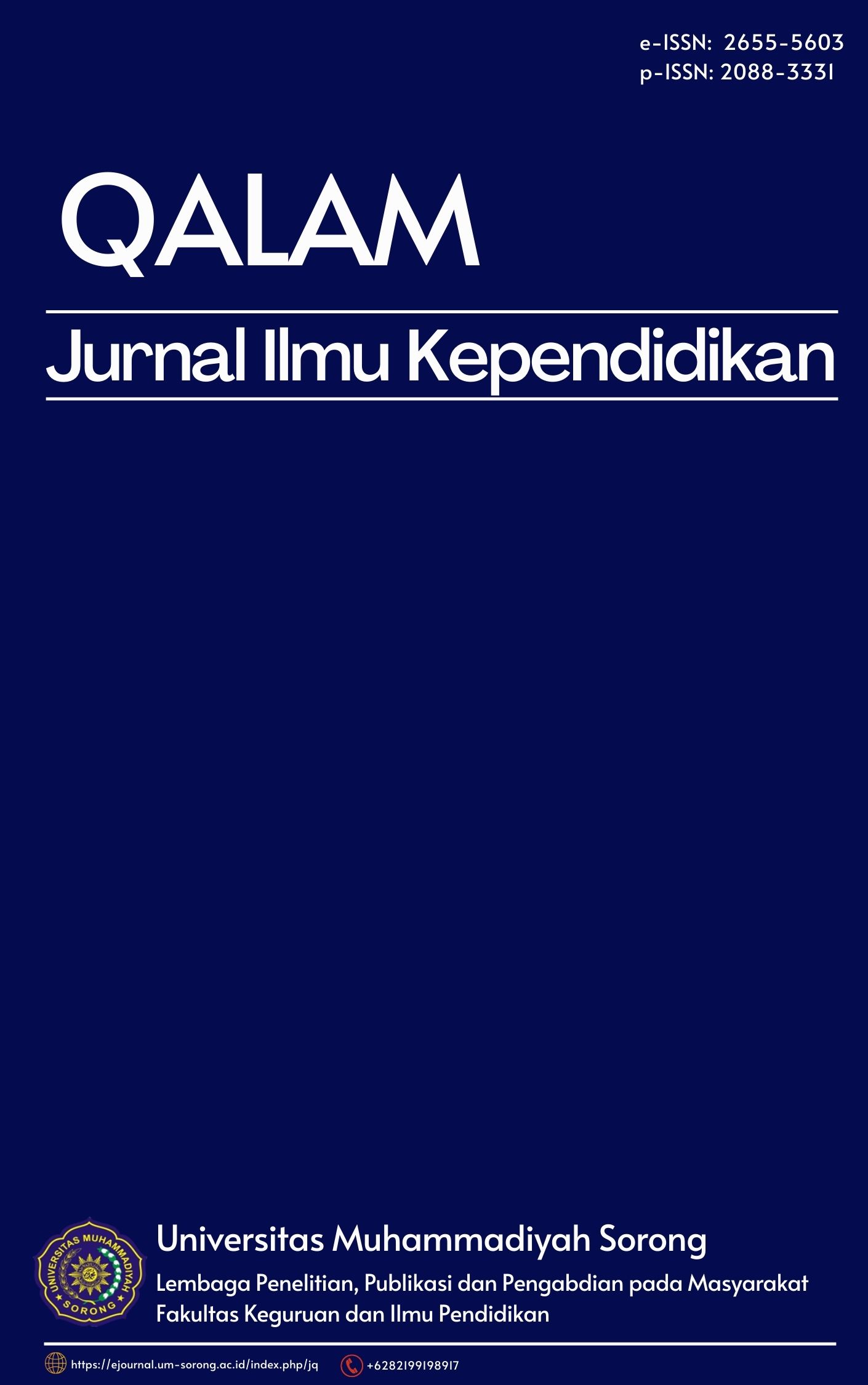Grammar Learning Strategy (GLS): Male and Female EFL Students’ Preferences
DOI:
https://doi.org/10.33506/jq.v12i2.2964Abstract
This research compares the preference for Grammar Learning Strategies (GLS) between male and female EFL students of Universitas Muhammadiyah Sorong. The research aims to identify the preferred strategies for learning grammar among males and females students and determine if a statistically significant disparity exists in preference for grammar learning strategies among males and females students. A total of 70 students, comprising 35 males and 35 females, took part in the research. They were obtained from 48% of the entire population. A Simple Random Technique was employed to randomly select 35 males and 35 female students from all the classes. The data were gathered using Pawlak's Grammar Learning Strategy Inventory (GLSI) questionnaire. The acquired data were analyzed using the Independent sample t-test procedure using SPSS version 29. The results indicate that male students preferred social grammar learning strategies (GLS). The preference for cognitive grammar learning strategies (GLS) was found among female students, particularly for dealing with Corrective Feedback (CF). Male and female English as a Foreign Language (EFL) Students at Universitas Muhammadiyah Sorong did not differ significantly with regard to their preferred strategies for learning grammar. Based on the analysis of the data, the researchers found that there was no statistically significant distinction between males and females regarding the strategies they preferred to learn grammar. Both males and females are utilizing a Grammar Learning Strategy at a medium level.
References
-87.
Cahyani, R., Abdullah, M. R. T. L., & Komara, C. (2022). The Investigation of English Grammar Learning Strategy on High, Middle, and Low Achievers' students in Indonesia.
Chamot, A. U., Barnhardt, S., El-Dinary, P. B., & Robbins, J. (1999). The learning strategies handbook. New York: Longman.
Ellis, R. (2008). The Study of Second Language Acquisition (2nd ed.). Oxford: Oxford University Press.
Huegli, Vicki-Ann. 2008. Strategies for Reading. London: Procede.
Hulstijn, J. H. (1995). Not all grammar rules are equal: Giving grammar instruction its proper place in foreign language teaching. In R. Schmidt (Ed.), Attention and awareness in foreign language learning (pp. 359-386). Honolulu: University of Hawai’i at Manoa.
Jamiah, J., Mahmud, M., & Muhayyang, M. (2016). Do male and female students learn differently? ELT Worldwide: Journal of English Language Teaching, 2(2), 110-125. https://doi.org/10.26858/eltww.v2i2.1691
Pawlak, M. (2009). Grammar learning strategies and language attainment: Seeking a relationship. Research in Language,7,43–60.
Pawlak, M. (2011b). Cultural differences in perceptions of form/focused instruction: The case of advanced Polish and Italian learners. In A. Wojtaszek & J. Arabski (Eds.), Aspects of culture in second language acquisition and foreign language learning (pp. 77–94). Heidelberg –New York: Springer.
Salahshour, F. et al. (2013).The Relationship between Language Learning Strategy Use, Language Proficiency Level and Learners Gender. Social and Behavioral Sciences. 70, p. 634-643. Iran: Azerbaijan University of Tarbiat Moallem, Tabriz.
Tam, C. (2013).A Study on Language Learning Strategies (LLSs) of University Students in Hong Kong.Taiwan Journal of Linguistics.11(2), 1-42.
Alsied, S. M., Ibrahim, N. W., & Pathan, M. M. (2018). The use of grammar learning strategies by
Libyan EFL learners at Sebha University. ASIAN TEFL, 3(1), 37-51.
Ansyari, M. F., & Rahmi, H. (2016). A comparison between male and female students’ language
learning strategies preference. Indonesian Journal of Integrated English Language Teaching, 2(1),
Dika, J., Jafar, M. B., & Mahmud, M. (2021). Male and Female EFL Students' Language Learning
Strategies. Celebes Journal of Language Studies, 242-255.
Gurata, A. (2008). The Grammar Learning Strategies Employed by Turkish University Preparatory
School EFL Students (Doctoral dissertation, Bilkent Universitesi (Turkey).
Laoli, A. (2010). The Analysis of the Students' English Learning Strategies at the Third Grade of SMA
Negeri 3 Gunungsitoli.Didaktik: Jurnal Ilmiah Pendidikan, Humaniora, Sains, dan
Pembelajarannya, 4(2), 1-21.
Mulugeta, F., & Bayaou, Y. (2019). Grammar learning strategies use of preparatory school students:
gender in focus. The Ethiopian Journal of Education, 39(2), 115-143.
Oxford, R. (1990). Language Learning Strategies: What Every Teacher Should Know. New York:
Newbury House Publishers.
Tilfarlioglu, F., & Yalcin, E. (2005). An analysis of the relationship between the use of grammar
learning strategies and student achievement at English preparatory classes. Journal of Language
and Linguistic Studies, 1(2), 155-169.
Wahyuni, S. (2013). L2 speaking strategies employed by Indonesian EFL tertiary students across
proficiency and gender. University of Canberra.

Downloads
Published
How to Cite
Issue
Section
License

This work is licensed under a Creative Commons Attribution-ShareAlike 4.0 International License.
The article copyright is owned by the author and Qalam: Jurnal Ilmu Kependidikan

This work is licensed under a Creative Commons Attribution-ShareAlike 4.0 International License.




